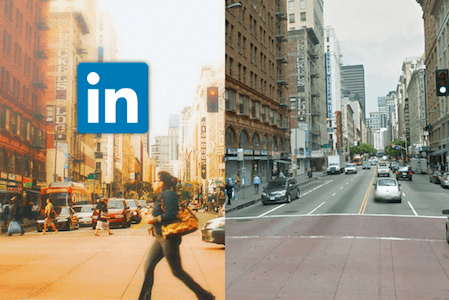The Biggest Mistake You're Making on LinkedIn
Published: Apr 12, 2016

LinkedIn has undergone several changes and updates since its inception, but it's still considered to be essential for jobseekers. A recent Forbes article notes that both jobseekers and hiring managers view LinkedIn as a primary tool. And most career advisers recommend that everyone, from emerging professional to seasoned executive, should have a LinkedIn profile. And it's this very profile that's the most important tool that LinkedIn offers. However, many LinkedIn users are a making a huge mistake when it comes to creating their profiles.
According to Laura Gonzalez, a certified expert resume writer, “One of the most common mistakes I see on LinkedIn profiles is the lack of completion. Many users are missing entire sections. They skip writing things like the summary, or they have no groups. Others don't include any details for their work history. It's absolutely critical to achieve 100 percent profile completion on LinkedIn. And taking the time to fill out the necessary details is a must, especially if you want to be found.”
Indeed, completing your profile will help your profile rank higher in searches. Hiring managers and recruiters use LinkedIn as a tool to find talent, so your profile serves as an important marketing tool for your job search. A short, partially completed profile will not hold up to others’ profiles that are complete.
If you need additional reasons for completing your profile, consider the additional networking opportunities. When you include complete information with your work history, schools, organizations, and more, you automatically increase the number of suggested connections that LinkedIn will find for you. Others who've also included the same company, school, and other organizations will show up in the “People You May Know” suggestions. This can help you expand and grow your network.
Yet another reason for completing your profile is that, under the Jobs tab, LinkedIn will populate the first page with positions that relate to the information included in your profile. This doesn't eliminate the need to use the search functions. However, you may find something under that first page that you might not otherwise have thought to search.
Along with failing to complete your profile, another common mistake is cutting and pasting your entire resume to your profile. Of course, there will be some overlap between your resume and LinkedIn profile, but you should think of your resume as a beginning point for creating your profile and avoid simply copying/pasting information. Think of your LinkedIn profile as an addition to your resume, an opportunity to showcase and highlight information not on your resume.
While your resume is a great tool for showing off your accomplishments and qualifications in order for you to move forward in the career direction of your choice, your LinkedIn profile creates an excellent opportunity to show off some of your personality (in a professional manner, of course). It's a tool that can supplement, showing a real person behind the facts on your resume.
This post was adapted from the new The Vault Guide to Resumes and Job-Hunting Skills.
Follow us on Twitter.
Follow us on Instagram.
Read More:
Which Font Is the Best for Your Resume?
Networking and Job Hunting for Introverts
15 Resume Tips for Tech Jobs